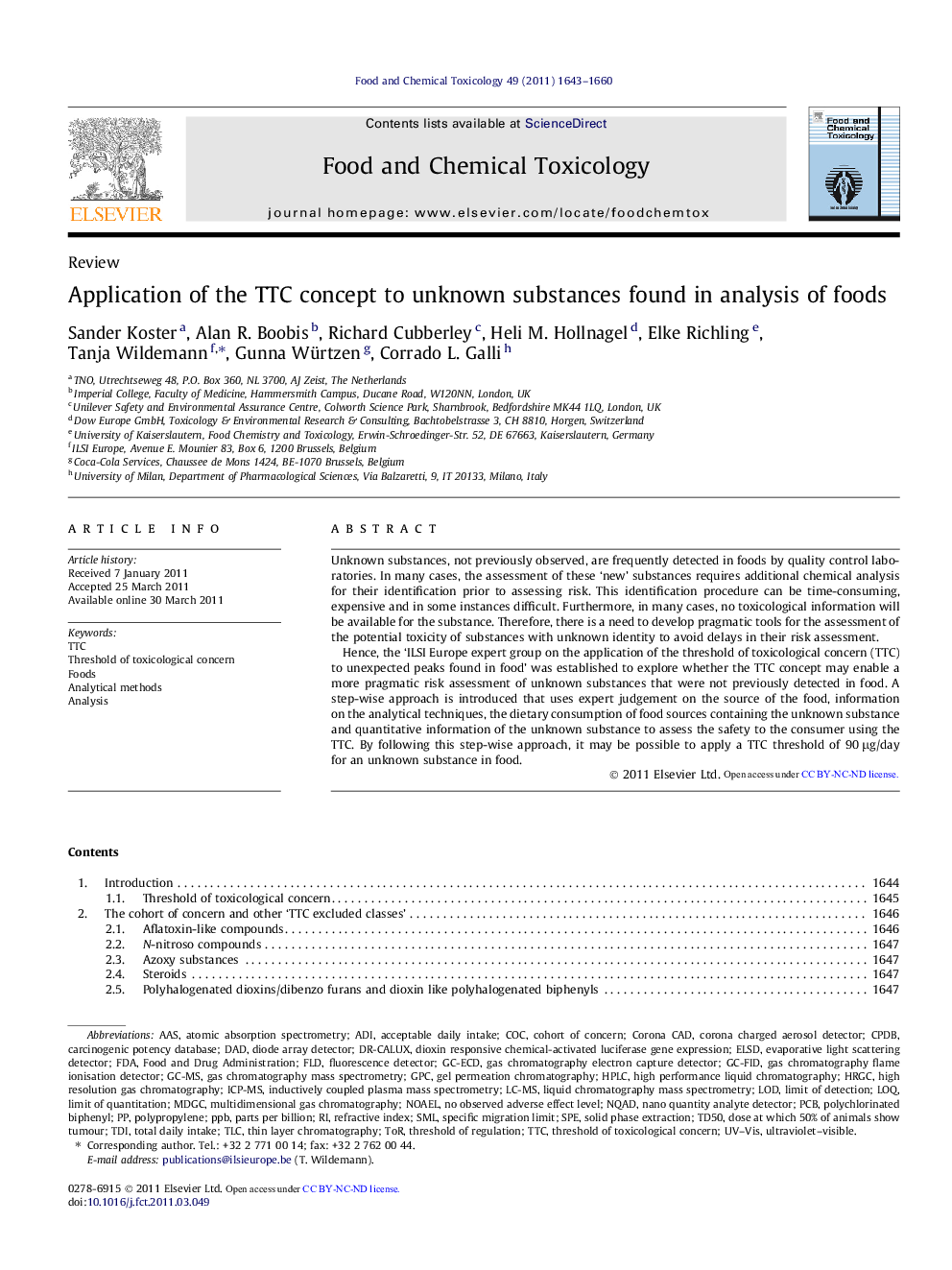| Article ID | Journal | Published Year | Pages | File Type |
|---|---|---|---|---|
| 5854103 | Food and Chemical Toxicology | 2011 | 18 Pages |
Unknown substances, not previously observed, are frequently detected in foods by quality control laboratories. In many cases, the assessment of these 'new' substances requires additional chemical analysis for their identification prior to assessing risk. This identification procedure can be time-consuming, expensive and in some instances difficult. Furthermore, in many cases, no toxicological information will be available for the substance. Therefore, there is a need to develop pragmatic tools for the assessment of the potential toxicity of substances with unknown identity to avoid delays in their risk assessment.Hence, the 'ILSI Europe expert group on the application of the threshold of toxicological concern (TTC) to unexpected peaks found in food' was established to explore whether the TTC concept may enable a more pragmatic risk assessment of unknown substances that were not previously detected in food. A step-wise approach is introduced that uses expert judgement on the source of the food, information on the analytical techniques, the dietary consumption of food sources containing the unknown substance and quantitative information of the unknown substance to assess the safety to the consumer using the TTC. By following this step-wise approach, it may be possible to apply a TTC threshold of 90 μg/day for an unknown substance in food.
⺠Pragmatic risk assessment of unknown substances applying the TTC concept. ⺠Step-wise approach using knowledge in analytical chemistry and toxicology to assess the safety of unknown substances. ⺠Possibility to increase an acceptable exposure of unknown substances from 0.15 μg/day to 90 μg/day. ⺠Application of the approach demonstrated with three examples.
